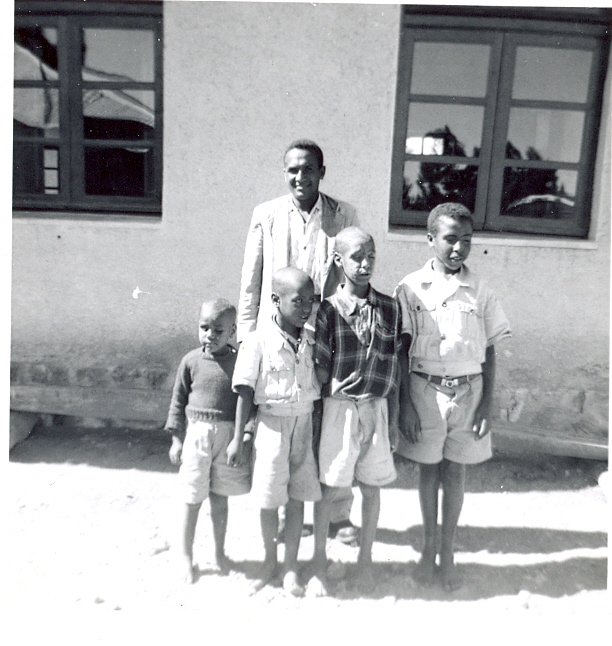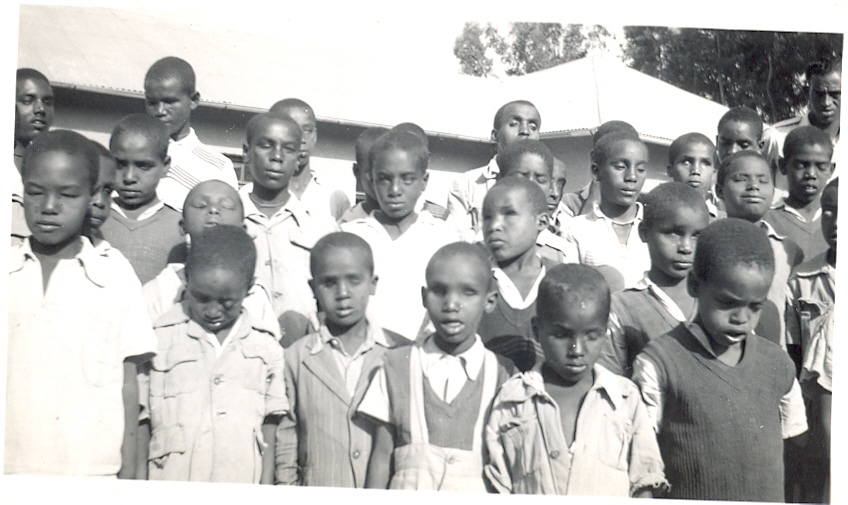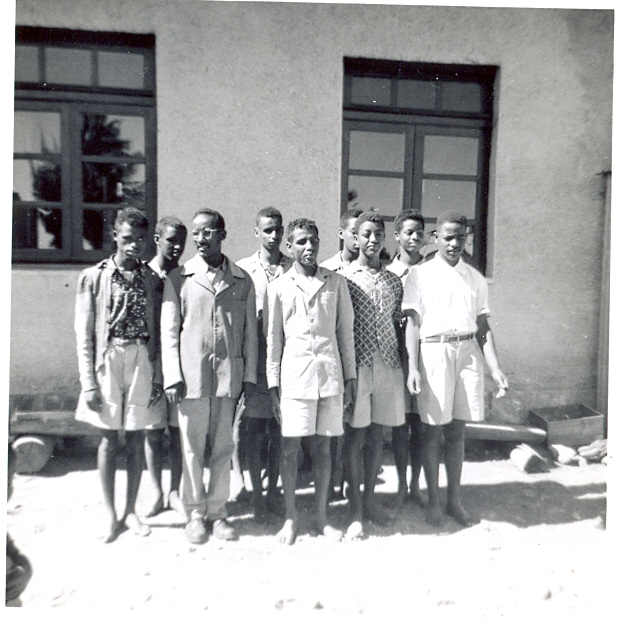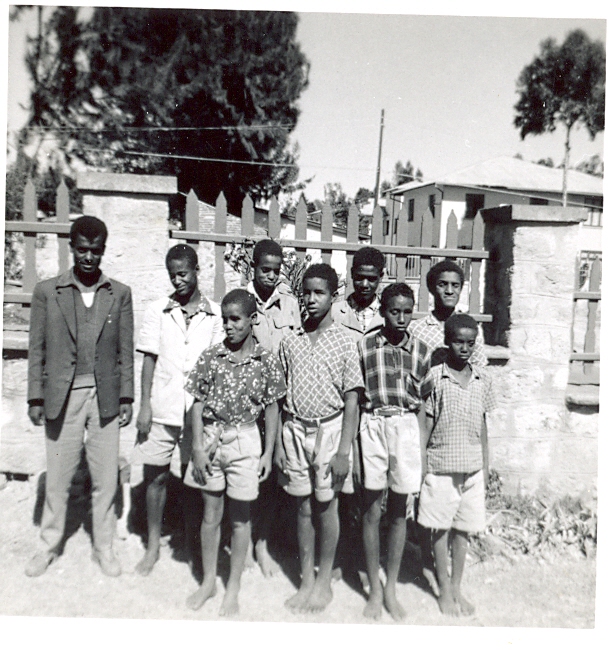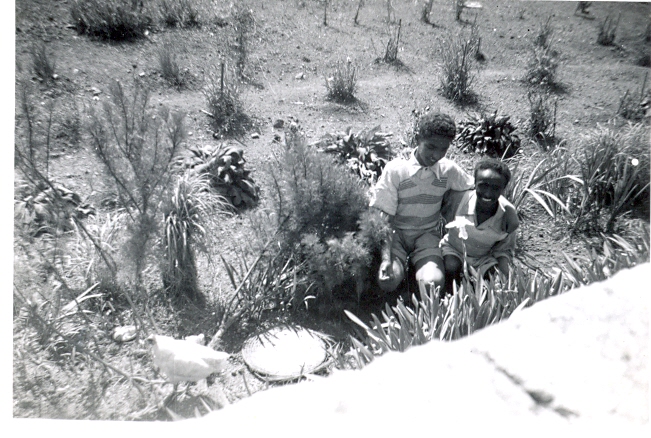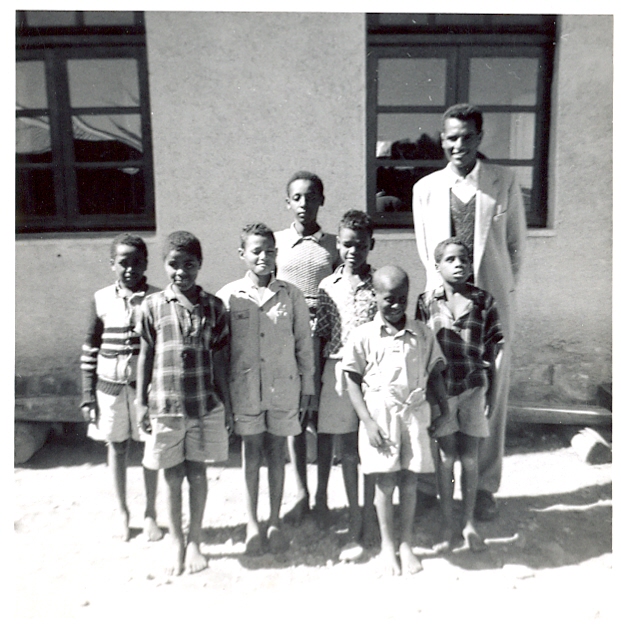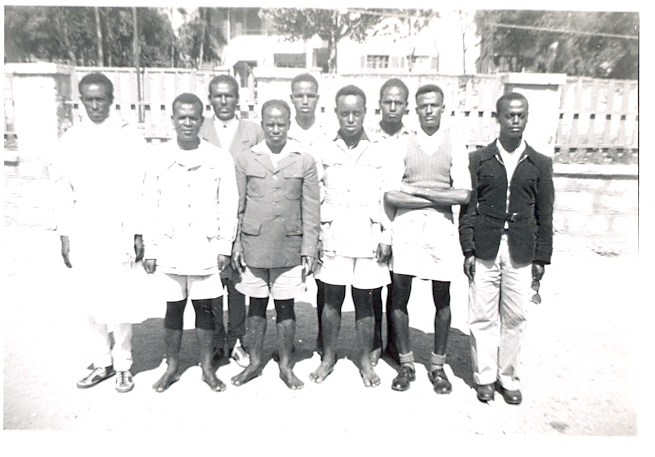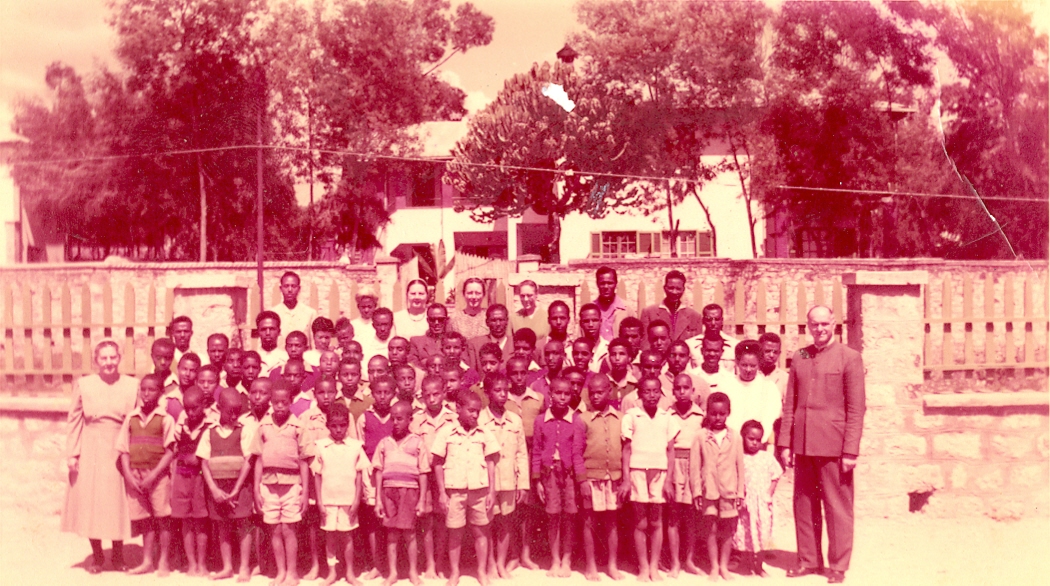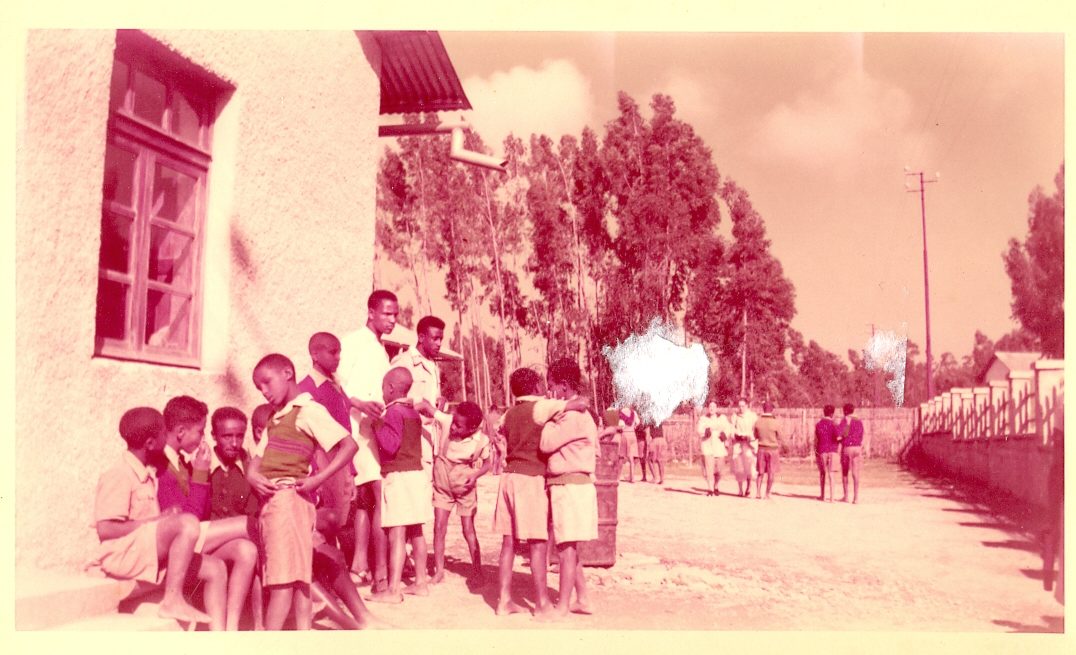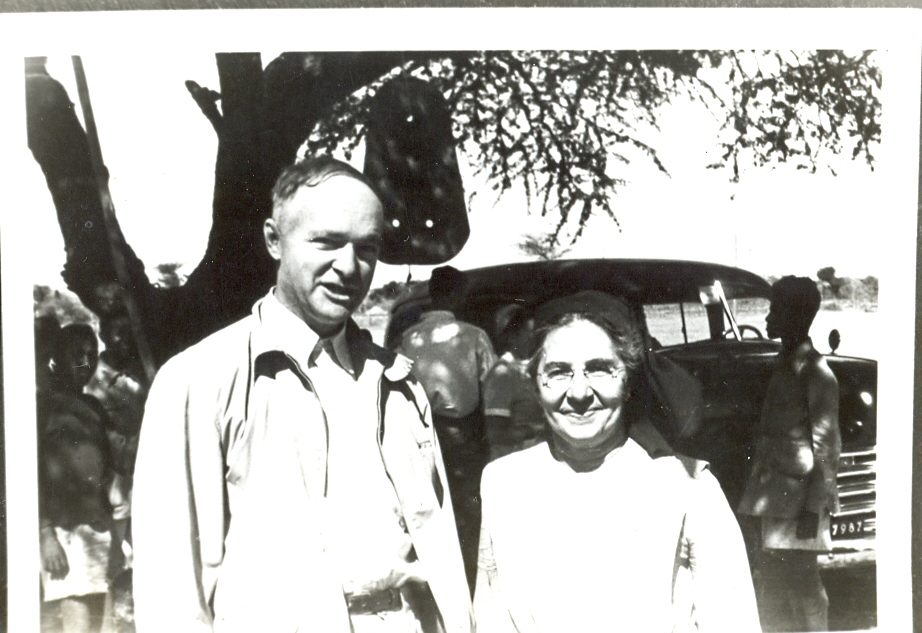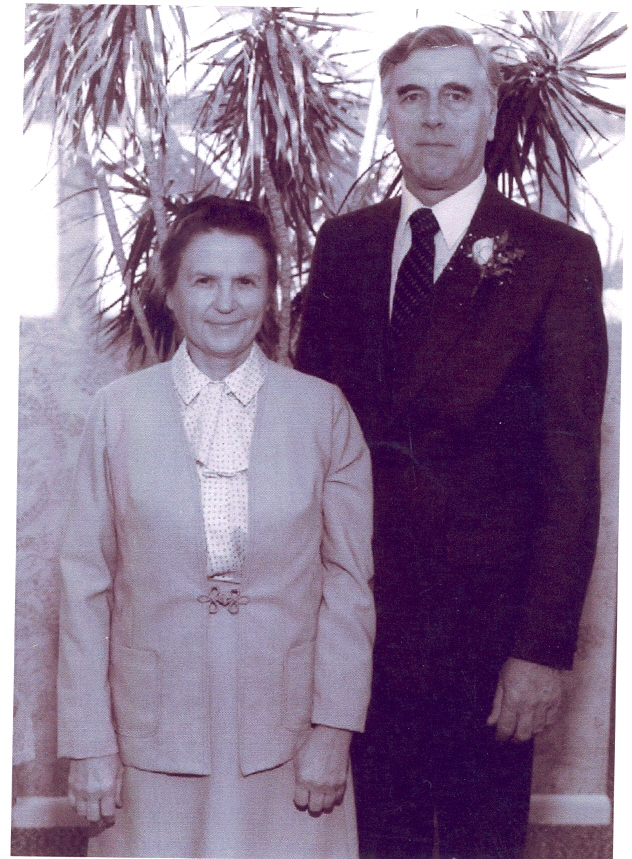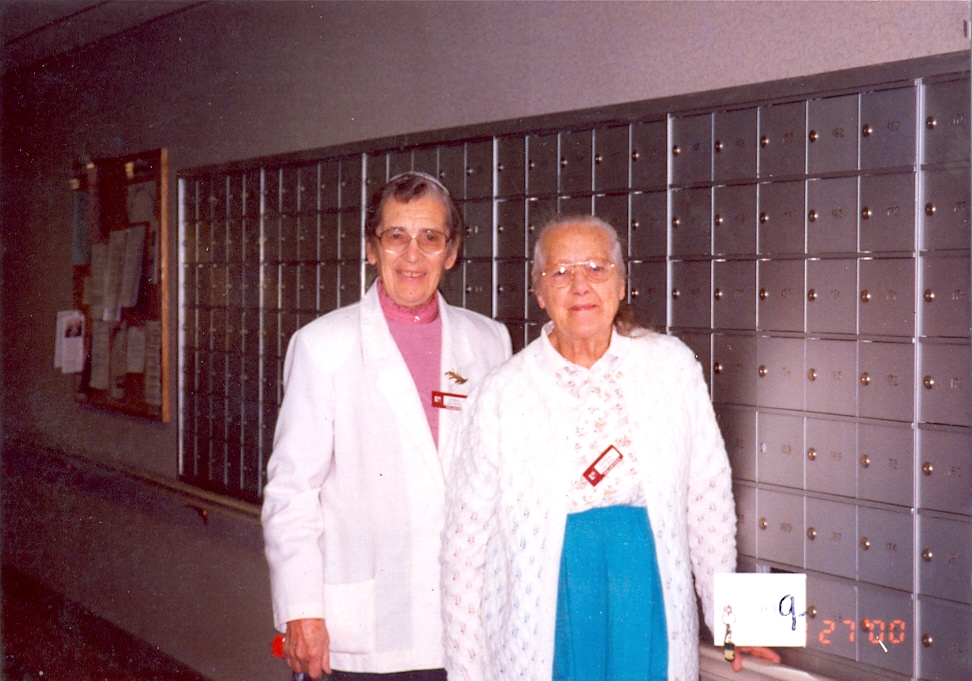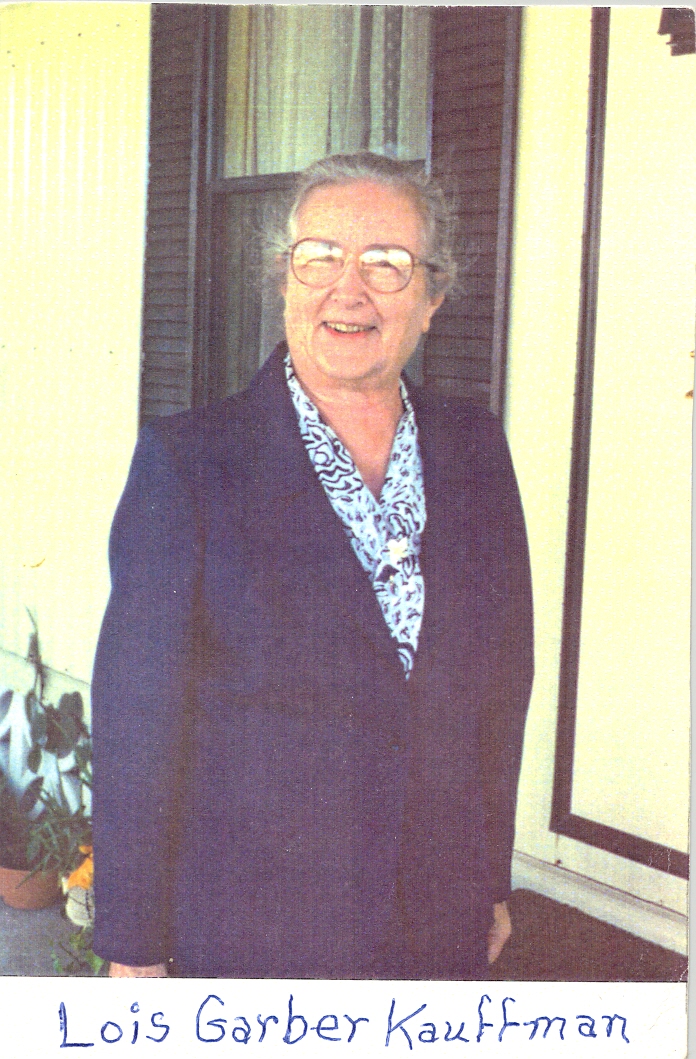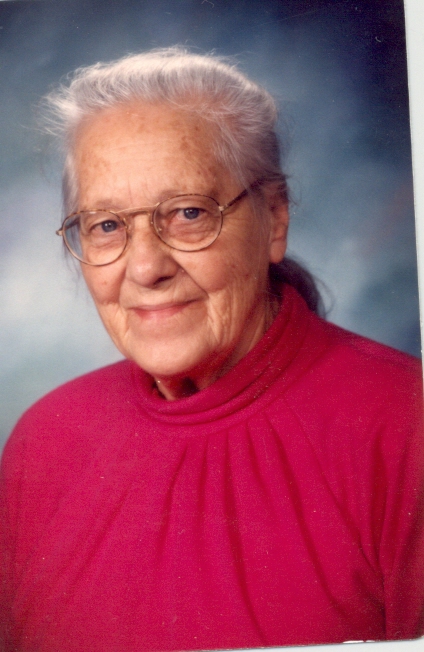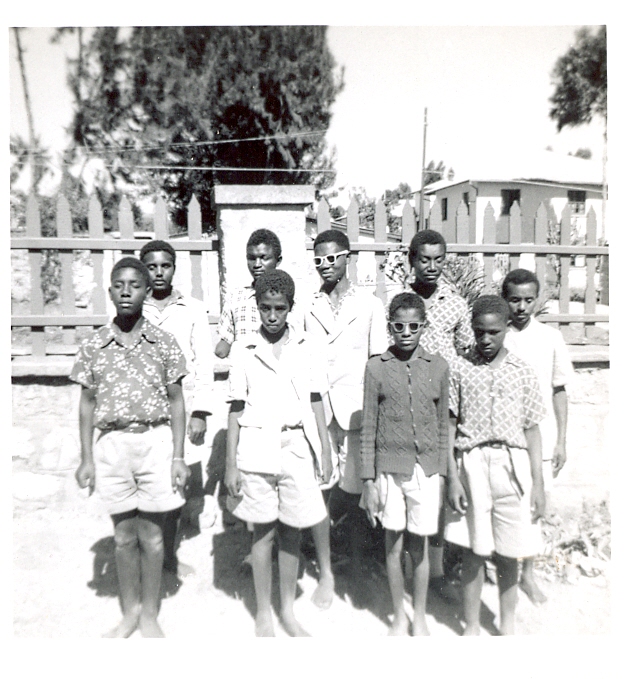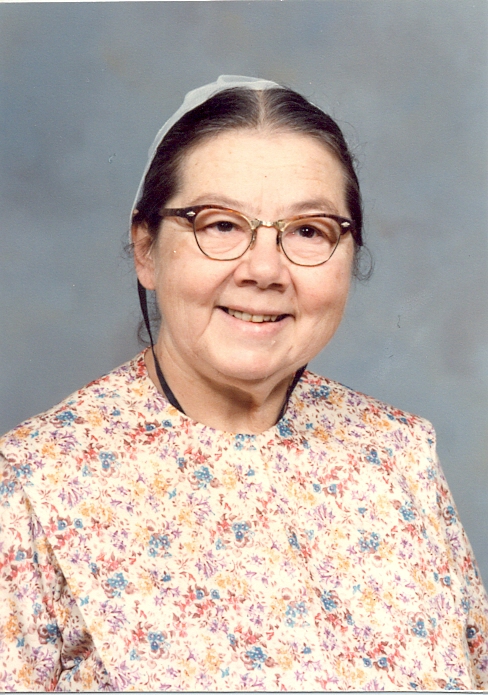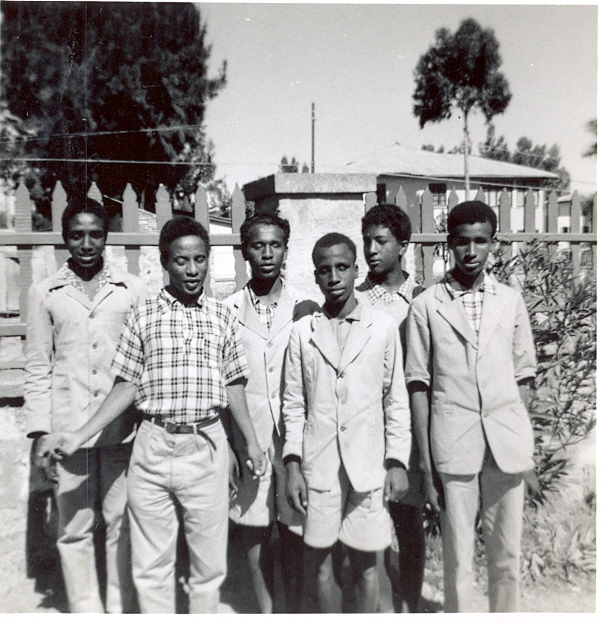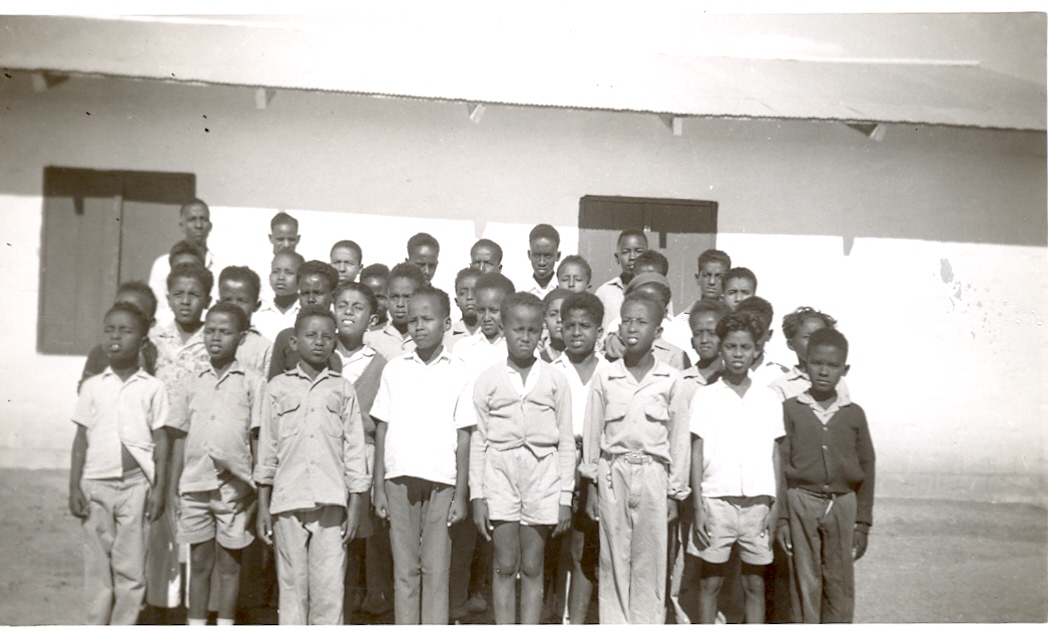The founder of Zena Wengel ministry to the blind and several of it’s original members attended the first school for the blind in Ethiopia, founded in 1952. Here is a history of that school and it’s first teachers, including original photographs.
The Haile Selassie I Meriha-Iwran School for the Blind (HSISB)
By
Zenawengel Ministry
Introductory note
Disability has been a source of all sorts of problems including economic hardship, social stigma, segregation and discrimination in Ethiopia. This may be true everywhere in the world.
It is estimated that about 17.5% of the total population of Ethiopia is affected by disability of one sort or another. This means that about 18 million people may be victims of some sort of disability. A significant portion of the victims belongs to the blind and visually impaired community. This may be clearly understood by observing religious centers, public places or institutions, etc. Perhaps, most of them may have to earn their living by means of begging which is of course regrettable.
Traditionally, young blind or visually impaired people joined religious schools and most of them became well known scholars. They served as teachers and clergymen in religious institutions. Usually, they managed to become respected members of the society. Those blind people who lost their sight at old age and those who did not succeed in their religious education were likely to lead a miserable life.
Following the introduction of the so-called western style education to Ethiopia in the early 20th century, the opening of modern schools gradually spread throughout the country. By and by, special boarding schools for the blind began to appear here and there opened by missionaries. Thus, blind and visually impaired students were able to join these schools. As Braille became a medium of education and communication, the methodology of teaching blind and visually impaired students changed from the traditional one which usually was based on learning by heart what was taught by the teacher word by word. In the case of the religious schools, this method was not a serious disadvantage, since even the sighted students were required to memorize much of the religious teaching as well.
Haileselassie I Meriha-Iwran School for the Blind located in Addis Ababa
The first government supported modern school for the blind was opened by Emperor Haile Sellassie I in 1952 in the Urael (Kasanchis) area of Addis Ababa. Since the Emperor attached a great deal of importance to making education accessible to all the different communities in the country, he decided to open a special school for the blind a number of years before 1952 and gave an order for the construction of a building suitable for blind students. In the meantime, during his visits to different parts of the country, whenever he would came across a blind boy, he made sure that he was brought to Addis Ababa bearing the transport expenses for him and his guide or escort. A blind boy thus brought to Addis Ababa would stay in the imperial palace (now Addis Ababa University) for a short period of time, then would be transferred to the Entoto Swedish Mission School which ran special classes for blind students side by side the sighted students under an arrangement between the Imperial office and the Swedish Mission School whereby the School was to admit the blind boys so that they could learn with the blind students already accepted under its own program, while the Imperial Office would pay a monthly fee of 16 Birr (about 6.50 US dollars at the time) for each blind boy covered by the arrangement. Besides, bedding materials for such boys was to be provided by the Imperial Office. What is more under the arrangement, Mr. Siyum Woldemariam, a blind man who was an expert in Braille and chosen by the Emperor to become Braille teacher in the Special School for the Blind to be opened, was allowed to stay in the Mission School teaching Braille until the opening of the special school. He was also paid a salary by the Imperial Office.
On the other hand, the Emperor chose the Mennonite Mission in Pennsylvania, USA, to run the new school for the blind. Accordingly, a number of missionaries came to Ethiopia a few years before the opening of the school and had to wait teaching in regular schools until it was ready.
The construction of the school building was completed sometime in 1952 and the missionaries were invited to take their responsibility of administering the school. Hence, they began their work in the preparation for the inauguration of the school, which was to take place on July 23, the birthday of the Emperor. The administration of the School for the Blind was overseen by the Haileselassie I Foundation which was established in about 1954 and authorized to oversee the performances of a considerable number of projects sponsored by the Emperor.
Sometime before the opening of the school, an announcement was published in the official government newspaper, the Addis Zemen, inviting parents and relatives to bring blind boys to the imperial office so that they would be admitted to the special school for the blind. What is more, an imperial order was issued to the provincial governors, viceroys, city mayors or administrators to collect blind boys and send them to Addis Ababa. Accordingly, His Highness Ras Siyum Mengesha, ruler of Tigray collected five blind boys, entertained them at his palace, gave them new clothes and sent them to Addis Ababa escorted by policemen for their safe arrival. Ras Andargachew, governor of Behiemidir and Simen, also collected five blind boys and brought them to Addis Ababa Similarly, The Asmara Municipality sent two blind boys and three blind girls to Addis Ababa. The boys were to join the imperial School for the Blind while the girls were admitted to the special school for disadvantaged or orphan girls opened by the Empress Menon in the Kechenie Medhanialem area. The Harer Municipality managed to send three blind boys and the Municipality of Dessie sent two blind boys. Moreover, two blind boys were sent from the province of Sidamo. One of these was said to be the only one that benefited from the newspaper announcement. This was because, his brother was a government employee who had access to newspapers. The other boy was able to get the chance with the help of Fitawrari Zewdu Aba Ferda, an Awraja governor in the Sidamo Province. About ten blind boys were collected from the city of Addis Ababa and surrounding areas to join the school. However, not all of them arrived in time for the inauguration. On July 22, 1952, twenty-two boys were present at the school. Four of them were those who were entrusted to the Swedish Mission School and their Braille teacher Mr. Siyum Woldemariam was also present. The boys had their hair cut, they washed and were given new clothes. On July 23, just before the inauguration ceremony began, five more boys were admitted to the school. But as they had not time for a haircut, washing and changing clothes, they were not allowed to attend the ceremony. They had to be kept in a room until it was over.
The Emperor and the Empress accompanied by members of the royal family, including the crown prince, the Patriarch of the Orthodox Church with his top officials and members of the nobility, ministers, high-ranking military and civil official, arrived in time for the inauguration. Moreover, members of the Diplomatic Corps and other dignitaries were present.
The eagerly waiting administrative and teaching staff of the school together with the blind boys paid respects to the Emperor, the empress and their entourage. The boys sang a couple of songs for the occasion. Next, the Emperor made an inaugural speech stressing the importance of advancing education and explaining his motive for opening the special school. The colorful inauguration ceremony was published in the Addis Zemen newspaper of July 26, 1952.
The school consisted a cross-shaped main building with bedrooms, office rooms, a somewhat large hall used for prayer and administrative meetings and other purposes, a first/aid treatment room, a bathroom with toilet facilities. There was also a dining hall and an adjacent room for cleaning kitchen utensils and ironing clothes. The eastern wing of the building was of board floor while the rest of the building was of tiled floor.
Outside the main building, there were several houses. One of these was the one Mr. Siyum and his family used for residence. It was located behind the main building nearby the Eastern wing.
Close to the western wing of the building there was the laundry house and further to the west, there was the kitchen where cooking and baking activities took place. At the south western corner of the school compound there was a house with rooms for teacher’s residence and a room for giving typing lessons to blind students and for typing practice. During exam occasions, high school blind students used the typewriters for typing out their answers.
In front of the eastern and western wing of the main building, there were playgrounds and sporting facilities where, a sliding board, seesaws, swings, and acrobatic bars could be found.
Just across the western wing of the main building, a new house was constructed where a Braille library with a reading and typing room was opened and gave service to blind students. It had a second section where a Braille printing press was set up for the production of Braille books.
At first, the missionaries lived outside of the school compound, but later on, a building was constructed at the south-eastern side of the school compound to serve as living quarters for the missionary girls and the director and his family.
The school began its teaching program, immediately after the inauguration ceremony took place. The boys were classified into four groups on the basis of age, rural or urban background, and educational background (whether traditional or in the western type of education). Accordingly, small boys, perhaps ranging from 5 to 8 years old with no education were placed in group/class 1. Older boys with some traditional education and coming from rural areas were placed in group/class 2. Those who seemed to have better traditional education and came from urban areas and those who appeared to be clever in their behavior when observed were placed in group/class 3. Lastly, those that came from the Swedish Mission School and other very few boys who had attended schools before losing their sight were placed in group/class 4. The first term ran until mid December and the final examination for that term was given to the students. It was intended to judge or evaluate the actual capacity of each boy and determine if reclassification was needed. The results showed that indeed reclassification was necessary. Hence, shuffling of students was carried out to upper and lower classes as the case may be on the basis of the evaluation results. In addition, a higher class (group 5) was opened. Thereafter, the groups or classes were to be known as grades. Three of the boys that came from the Swedish Mission School joined by a fourth one coming from another background formed grade 5.
Following the inauguration, the Emperor used to visit the school frequently bringing sweets, fruits and special cakes for the students, particularly on special occasions, such as Ethiopian Christmas, Ethiopian Easter, the Emperor’s coronation and birthday celebrations. Besides bringing fruits, sweets and cakes, he also brought soft drinks, sweaters and even new cloths that could be used for tailoring uniform clothes. As time went on, his visits became less frequent.
The first administrative and teaching staff consisted of Mennonite missionaries and Ethiopians. The first directors were Mrs. And Mr. Keener who jointly ran the school; and the first missionary teacher was Miss Lois Garber. Sometime later she was joined by Miss Esther Baker, Miss Alice Snyder and Miss Alma Eby. The missionary teachers taught mostly English, music and handicraft including basketry, rug and mat making, sewing, looming, knitting and woodwork.
The first Ethiopian teachers included:
Mr. Siyum Woldemariam was the first Braille teacher who taught this subject for many years. He also played a leading role in the establishment of the Ethiopian National Association of the Blind (ENAB) and was its first president. Later on, after the Special school for the blind was transferred to Sebeta he served as deputy director of the school. Finally, he was transferred to Asmara and was appointed as the director of the Abriha Bihata Special School for the Blind and served there until his retirement.
Mr. Hilawi Teclemariam taught geography, history and sports for about two years and left to join another institution. Later on, he joined the Haileselssie I Foundation, becoming a staff member of the supervising authority.
Mr. Beyenie Chichaybelu taught geography, science and sports for about two years. He was an innovative teacher who was able to construct a map of Ethiopia from blocks of wood representing each of the fourteen provinces at the time. This helped the students to envisage the shape and size of each province He also drew tactile diagrams to demonstrate the different parts of different flowers. This enabled the students to comprehend the position, shape, the role and interrelation of the different parts of a flower.
During his tenure of service, he initiated the idea of designing a code of ethics for the students and with the cooperation of a few notable and senior students prepared a strict code of ethics to be implemented in the school with immediate effect. The rules in the code of ethics included prohibition of telling lies, swearing, uttering insults, even against non-humans, or calling someone by a nick name. Violation of any of these prohibitions could entail up to five lashes with a belt. A number of boys were assigned to execute the punishment.
The code of ethics could have been misused or misapplied because there was not any procedure for conducting any sort of hearing or trial. The executing officers discharged their duties simply on the basis of the complaints brought to them or the report brought by anyone. Denial by a student alleged to have violated one of the prohibitions could be considered as a lie entailing additional punishment.
Beside the principal code of ethics, there were rules governing order during class hours and study time, dining hall order during mealtime and bedroom order during afternoon nap and regular bedtime, maintenance andproper usage of sanitation materials and the toilet facility. For example, in the dining hall, dropping crumbs of food on the floor under the table was prohibited and under the sanitation rules, using too much tissue paper and frequenting the toilet too often were prohibited.
There were classroom and bedroom monitors, toilet inspectors and dining table controls to ensure the observance of the rules. Failure to observe those rules could entail punitive measures that were imposed by the concerned monitor or inspector at their discretion. It is believed that most of the students resented the imposition of the code of Ethics and other rules, particularly, the manner of their implementation. This could be deduced from the fact that the strict system did not last long after Mr. Beyenie left the school to continue his education. Eventually, he managed to pursue his studies to the third degree level and served his country in different positions until he retired from his teaching job at the Alemaya (Haromaya) University following the change of regime in 1991.
Mr. Haile Woldemikael taught history, math, Amharic and sports during his stay in the School for about three years. He then left to pursue his studies and did so to the third degree level after which he served his country in various positions until his death in 2009.
Mr. Asfaw Biratu taught geography for about two years. During his teaching period, the School for the blind received a globe easily discernible to blind students. The different geographical features of the earth were shown on the globe with distinct tactile representations. With the help of that globe, Mr. Asfaw Biratu was able to give a clear idea to his blind students of the whole world and to be acquainted with the different features of the earth including mountains, plateaus, rivers deserts, lakes seas, oceans, the different regions, i.e. the polar zones, temperate zones and the torrid zones. Besides, students came to know about the two types of imaginary lines, the longitudes and latitudes as well as the different time zones in the world. Based on this knowledge they were able to determine the location and time of any given place or country whenever needed.
At the end of two years, Mr. Biratu left to join the University College of Addis Ababa where he acquired his BA degree and resumed his teaching profession. After teaching in different government high schools, he went abroad for further study and returned with a master’s degree to continue with his teaching profession and served his country in this field until his retirement.
Mr. Woldeyohannes Birkie joined the school as the first math teacher. First, he taught orally; following the introduction of an assistive device, a special square board with cube shaped holes — fifteen by fifteen rows plus a large number of cubes, each face containing Braille characters that could be used to represent Braille numerical figures; he applied this device to teach for the four mathematical operations: addition, subtraction, multiplication and division.
Mr. Abdisa [(ater, Fikreyesus) was physical exercise teacher. He also taught his students spiritual and secular songs of local origin. He left after serving about a year to join another institution.
There were few other teachers who served only for very short periods of time. Among these, Mr. Fekadu Gedamu (now Doctor) taught math probably only for the first term. Mr. Ayalew was a sports teacher and taught perhaps, only for the first term.
As indicated earlier, one of the subjects taught by the missionaries was music. In this regard, Miss Alice Snyder played the leading role in teaching Braille music notation to the blind students. She enabled several boys to become good organ and piano players. She also succeeded in forming a much admired and popular choir as well as quartets and octets that sang spiritual songs at special occasions such at religious conferences in and out of Addis Ababa and in different parts of the country. There were occasions where the School Choir joined with other choirs to sing at special ceremonies. For instance, once the School Choir joined the Ethiopian Evangelical Makaneyesus Church Choir and sung at the same Church for the audience throughout the special religious ceremony. One of the songs was sung in eight parts. There were also occasions, where members of the School Choir joined Mennonite missionary singers at wedding ceremonies.
The Meriha-Iweran School for the Blind was designed to accommodate forty young male blind students. When it was officially opened on July 23, 1952, twenty-seven blind boys were present. However, before one year elapsed, the number of blind students exceeded forty and in three years’ time, there were well over sixty blind students. Consequently, double-decker beds had to be introduced and corridors had to be used as bedrooms and classrooms. Although grade 5 was opened towards the end of 1952, no new grades were opened in 1953 and 1954, for no clear reasons. Perhaps, the school administration wanted to make sure that the students had a solid educational background. In the meantime, more shuffling of students took place. Accordingly, in 1954, three grade 4 students were promoted to grade 5 while one grade 5 student was sent back to grade 4. Similar reshuffling took place in the lower grades as well.
In September of 1955 Grade 6 was opened; a former bedroom was assigned for it. This was possible because the introduction of the double-deck system enabled the reduction of bedrooms. But there was no more space for opening grade7 the following year. Consequently, at the end of the 1956 academic year, the school administration reached a decision that instead of being promoted to grade 7, grade 6 students should be assigned to teaching practice in the lower grades for one year after which they were to be sent to different elementary schools to teach in lower grades. So, grade 6 students were assigned as assistant teachers to teach from grade 1 to 3, during the academic year of 1956-57.
However, during the summer break of that academic year, at a staff meeting of the School, someone proposed that grade 6 students should, instead of teaching, join a nearby regular school and continue their education there. Following discussion, the proposition was agreed upon. Accordingly, a discussion with the Asfawossen Elementary School Director Mr. Rao (an Indian national), was held following which, an agreement was reached to let the seven blind students to join grade 7 of Asfawossen School for the academic year of 1957-58. The blind students were not sure if they were on equal status with the Asfawossen School Students and as such, they were uncertain as to whether they could succeed.
About a month later, the school director issued an announcement declaring that he was going to give an examination to lower, i.e., grades below 8 so that those who succeed in the examination would be promoted to the next grade. The reason given was that the lower grades were crowded while the number of students in grade 8 was very low. Accordingly, the examination was given towards the end of October or, at the beginning of November 1957. When the results came, five of the seven blind students had passed the exam and so were promoted to grade 8. On the other hand, out of the 65 or so sighted grade 7 students, about 26 passed and were promoted to grade 8. This boosted the confidence of the blind students.
In June of 1958, all grade 8 students sat for the Ministry examination given throughout the country.
That year, all the Asfawossen School students passed the Ministry examination and its was said that the Asfawossen School stood first from all the elementary schools in the country. Consequently, the students were given the chance of taking an English course by Dr. O’Connor, an American linguist in the University College of Addis Ababa Speech Laboratory during the summer break. The five blind students participated in that course. The car driver assigned to serve the linguist was given the duty of giving service to the blind boys to and from from the University College to the School for the Blind.
Coincidently, Asfawossen School started a secondary school section for the new academic year, and so the blind students were hopeful of joining grade 9. But the school administration refused to accept them claiming that blind students could not take geometry and algebra. This was a hard blow to the blind boys.
Mrs. Tayech Beyenie, a social worker who was a staff member of the Haileselassie I Foundation took the case of the blind boys and fought hard to have them admitted. Finally taking into account the undertaking by the missionaries running the School for the Blind to provide the necessary assistive devices for doing geometry and learning Braille materials for algebra, an agreement was reached to accept the blind boys. So they were admitted to the school towards the end of November after midterm exams were over. The blind students decided not to take French because they had no learning materials in Braille and no one could help them in pursuing their French study. In the other subjects, the blind students had no problem in following their studies. This was because the missionary girls from the school for the blind, Miss Esther Baker and Miss Alma Eby took the responsibility of assisting the blind students by reading textbooks and other learning materials, dictating notes from exercise books borrowed from sighted classmates and copying geometry figures and diagrams into tactile figures and diagrams. They also dictated the six trigonometry tables to be transcribed into Braille so that the three blind students could pursue their trigonometry studies without much difficulty.
One of the blind students did not manage to pass to grade 10, another one made it to grade 11; but not to grade 12.
After completing grade 10 and being promoted to grade 11, the top grade students were transferred to Minilik II Secondary School grade 11 in 1961 and in September of the same year, the new academic year, three of them were promoted to grade 12.
The blind students that attained grade 12 owed a great deal to the two missionary girls who devoted their time and energy to their success. Without their assistance the successful completion of their studies would have been improbable.
The missionary girls’ assistance lasted until the end of grade 11. This was because The Mennonite Mission head who was the director of the School for the Blind, ordered the girls to stop their assistance to the three blind students then in grade 12. The reason he gave was that the Mission was obliged to educate blind boys only up to grade 8 and what they were doing was beyond what was expected of them. So they had to stop assisting the three blind students in compliance of the order given by their boss, most likely against their will. To make things worse, the 12 grade math teacher, Mr. Chacko, an Indian mathematician, adamantly refused to give oral explanation to any mathematical problem during his class. He said that he had not come to teach blind students nor did he know how they could learn math. Since grade 12 students were expected to take the Ethiopian School Leaving Certificate exams, the problems facing the blind students appeared to be insurmountable. At the time they were taking all the subjects that were taught, except French. But it was possible to drop any subjects at the beginning of the third term except the three compulsory ones, Amharic, English and math, provided that the minimum number of subjects, six at the time, was satisfied. Accordingly, the blind students dropped Pure Physics, Pure Chemistry, Mathematics B (which consisted mostly of geometry, trigonometry and few algebra questions), General Science and geography. They decided to concentrate on English, English Literature, history, biology, Amharic and Mathematics A. If anyone of them failed in one subject, he could not join the University College of Addis Ababa. On the first day of exam sometime in the first week of June 1962, the blind students were surprised to get the exam questions in Braille. They were also expected to give their answers in Braille. As they were used to giving their answers by means of typing on the ordinary type writer, they were not sure whether they could manage using the Braille writers properly.
After the exams were over, their answers were dispatched to the UK to be translated into print. This took time. Sighted students got their results at the end of July or the beginning of August. As the number of students sitting for the ESLCE was considered low, students who results believed to be on the border line, were given additional examination and those who succeeded got the chance of joining the University.
The results got the three blind students came at long last on October 17, 1963. By this time, the other successful students were in their third week of doing their studies in the College. Fortunately, the three of them did pass and were admitted to the University College. Two of them joined the Arts Faculty while the other joined the Education Faculty. After completing two years of study, one of the Arts blind students and the one in the Education Faculty decided to join the newly established Law school of the Haile Sellassie I University where they completed their studies and after fulfilling their national service of one academic year in the Attorney General’s Office of the Ministry of Justice, graduated in 1968. The student that remained in the Arts Faculty continued his studies in English and also French and graduated in 1965 without having to go for national service because the Ministry of Education declined to accept the service of a blind teacher. Hence, he was compelled to seek employment from private institutions. Fortunately he was employed as an English teacher by the Bible Academy which was located in Nazret (Adama) and run by the Mennonite Mission.
The Sebeta School for the Blind
As described here before, the Special School for the Blind in Addis was meant to accommodate only forty boys; the number joining the School exceeded the limit by about 60% creating a serious shortage of space. Hence, when the emperor became aware of the problem, he granted a large plot of land, over ten hectares, in the nearby Sebeta town for the construction of a new school for the blind accommodating both boys and girls.
Construction work began soon after and several buildings were constructed to serve as administrative quarters, dormitories, classrooms, Braille printing press, library and health facilities as well as handicraft centers. Besides, there was enough area for sporting, gardening and planting activities.
Most of the movable property of the Addis Ababa School for the Blind including the Braille printing press, relevant Braille books and other items were transferred to the new site.
Following the completion of the construction and furnishing work of the buildings, the Addis Ababa School for the Blind and its elementary students together with most of teaching and support staff were transferred to the new Sebeta School. New blind students, both boys and girls were also admitted in larger number. The number of girls was much fewer than boys. Hence, three dormitories were reserved for boys and only one for girls. The four dormitory buildings were named after highly renowned blind scholars: the first Art Memoir Gebreyesus, the second Getie Gemora, the third Aleka Getahun and the fourth Memhir Esdros.
As the Sebeta School was intended for elementary education, the high school blind students that were studying in a number of regular schools as day students coming from the Addis Ababa School for the blind were left behind to continue their studies in their respective high schools. A monthly stipend of 20 Birr (8 US dollars at the time) was to be paid to each student by the Haileselassie I Foundation to subsist on.
The Sebeta School for the Blind was formally opened sometime in 1963 in the presence of the Emperor, members of the royal and nobility, the Patriarch and other important church leaders, Ministers, High-ranking military and civil officials. At the occasion, the Emperor made an inaugural speech and different colorful events took place. The Emperor appeared to have a special favor for the school. It is said that he paid frequent visits to the school until he was removed by the Derg Regime in 1974.
The Sebeta School for the Blind taught up to grade 6. Consequently, the Sebeta school students, after completing grade 6 successfully had to join regular junior and senior high schools in the Sebeta area. While attending junior high school, they were allowed to stay at the school for the Blind. But when they joined senior high school, they were required to leave the school and live by themselves. They were paid by the government a monthly stipend of variable amount depending on their circumstances.
Despite of all sorts of obstacles, inadequate learning materials, and lack of assistive devices, hundreds of blind students coming from the Sebeta School for the Blind were able to join different institutions and successfully complete their studies. A considerable number of them continued their studies to the second or third degree in different fields. What is more, engaging in different occupations over the years, they have proved their aptitudes and capabilities.
With the increasing number of blind and visually impaired students, the special schools were not enough to accommodate all those who wanted to join. Besides, the schools taught only elementary education. Hence, blind and visually impaired students had to join regular schools, but without sufficient learning facilities. Even the basic tools such as slates, styluses, and Braille paper were often not available. In most cases, they had to learn by simply listening to what the teacher said in the class. This, of course, affected their performance and results.
In the special schools for the blind, Braille books, writing equipment including slates, styluses, Braille paper, Perkins braillers from the US, and Braille writers from a few European countries were be available but in short supply. The curriculum in such schools embraced almost all the subjects that the sighted students learned. But in the regular schools, due to lack of assistive materials and because of the fact that teachers did not have the necessary orientation to teach blind students, they had to drop math, physics and chemistry. This, of course, seriously restricted the number of the fields of study students could choose in the institutions of higher learning.
The introduction of modern adaptive technology products, such as computers, embossers and special software as well as the necessary assistive input and output devices are likely to widen the scope of fields of interest for blind students in the future.
